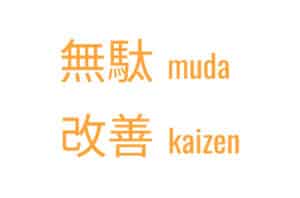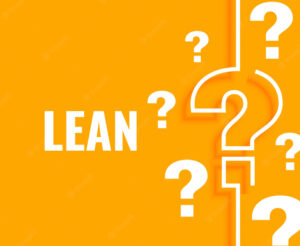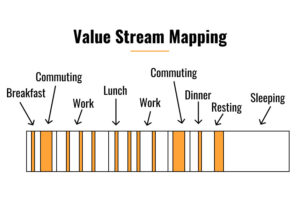Japanese words in lean are confusing for beginners
When I discovered lean and researched on the Internet, the first words were muda, heijunka, and the 5S.
As a new learner of lean concepts, these Japanese words were a barrier to my learning.
My first question was: “Why are there so many words in Japanese when we talk about lean?”
 Do you know the meaning of muda and kaizen?
Do you know the meaning of muda and kaizen?
We know that these concepts were popularised and put in an application in Japan by Toyota.
Japan is a mysterious country that most people in Western countries still don’t understand well.
What I know about Japan comes from some movies, the food (sushi, ramen), history knowledge learned at school (mainly WWII), manga (Japanese anime), and books on Toyota.
I know that my knowledge of Japan is very limited and reductive.
I never went to Japan to visit and experience this country with my own eyes and ears.
What are the reasons we keep using the Japanese words?
I see several reasons why we use these Japanese words:
- respect for the origin of the idea
- habits
- jargon to sound more professional
1. Respect for the origin of the idea
I use the Japanese words for respect for the innovators.
I don’t want to inadvertently change the meaning with my translation.
English is not my mother tongue, finding the English translation of the Japanese word is not natural.
We know that kaizen means “change for the better”. When I use kaizen, the definition and meaning are clear to me.
2. Habit
As I discovered these concepts with Japanese words, they stuck in my mind, they became the reference so I continue to use these Japanese words by habit.
I believe it would be a real challenge to define a new set of vocabulary that everyone would agree upon.
3. Jargon to sound more professional
The dark side is when professionals use this Japanese jargon to impress their clients or overuse them on social media for marketing purposes.
Knowing how to write 100 kanji (Japanese ideogram) doesn’t add value to the client.
On the contrary, explaining these concepts in basic English and making your audience understand them is the true mastery.
We should make lean thinking accessible to all, easy to understand, and practicable, not surround it with an artificial barrier of technical vocabulary.
The culture of lean is built on myths
My takeaway is that it is fine to use the Japanese vocabulary when it helps for better communication, but one should avoid showing off his knowledge by overusing these Japanese words and confusing the audience.
Having this common vocabulary in Japanese is our secret password: “How do you say waste in Japanese?”
If you know the answer is “muda”, you are one of our tribe. 🙂
This Japanese vocabulary, the “myths” around Toyota/Ford, and our “heroes” (Deming, Ohno, Taylor,…) are the elements on which is built our “lean community”.
Around the world, we may not be able to communicate in our native language, but when one says “muda” or “kaizen”, we understand each other.
Our lean community shares the same fundamentals: scientific thinking, intelligence, and respect for people.
And the Japanese vocabulary is one of these fundamentals.
Check out these book summaries if you want to learn more on lean in Japan:







